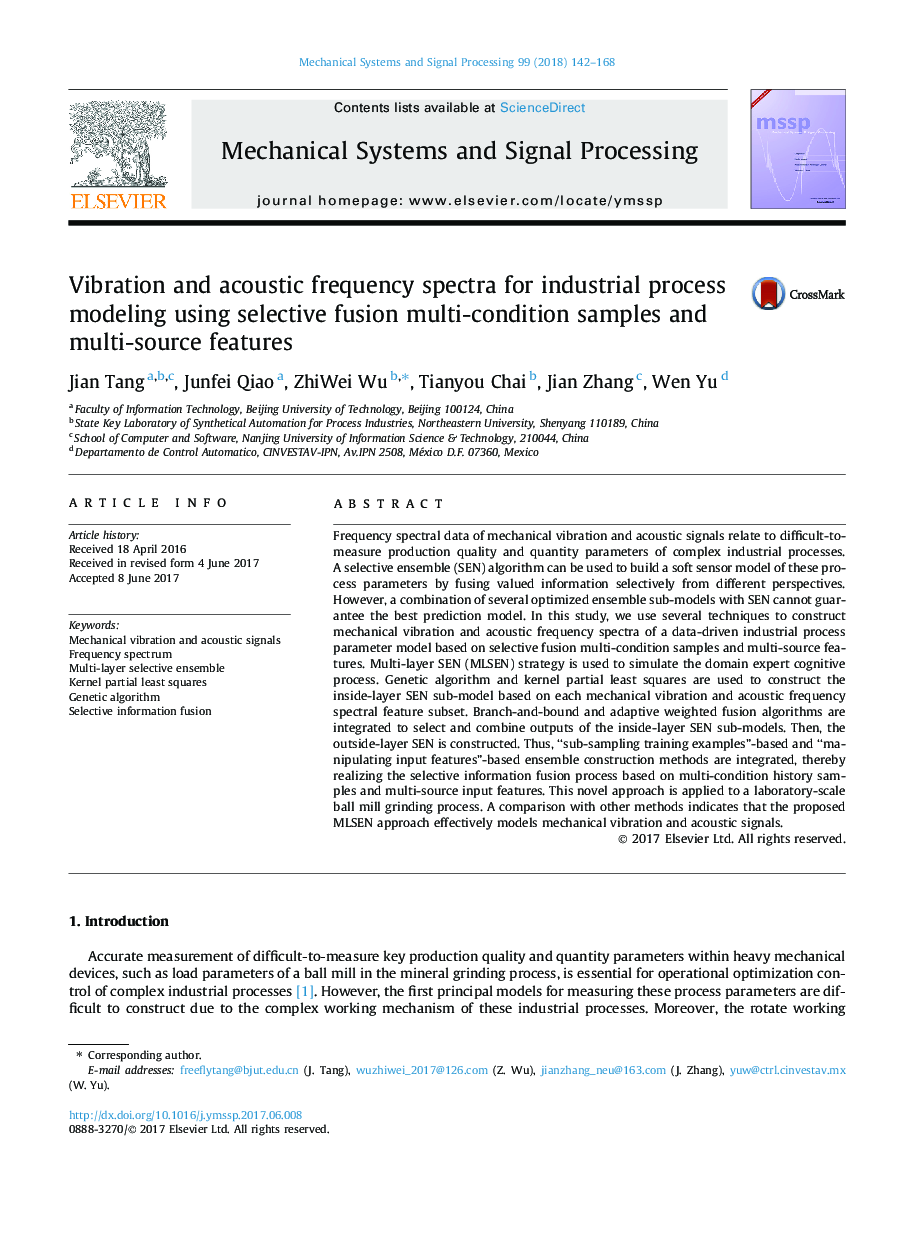| Article ID | Journal | Published Year | Pages | File Type |
|---|---|---|---|---|
| 4976747 | Mechanical Systems and Signal Processing | 2018 | 27 Pages |
Abstract
Frequency spectral data of mechanical vibration and acoustic signals relate to difficult-to-measure production quality and quantity parameters of complex industrial processes. A selective ensemble (SEN) algorithm can be used to build a soft sensor model of these process parameters by fusing valued information selectively from different perspectives. However, a combination of several optimized ensemble sub-models with SEN cannot guarantee the best prediction model. In this study, we use several techniques to construct mechanical vibration and acoustic frequency spectra of a data-driven industrial process parameter model based on selective fusion multi-condition samples and multi-source features. Multi-layer SEN (MLSEN) strategy is used to simulate the domain expert cognitive process. Genetic algorithm and kernel partial least squares are used to construct the inside-layer SEN sub-model based on each mechanical vibration and acoustic frequency spectral feature subset. Branch-and-bound and adaptive weighted fusion algorithms are integrated to select and combine outputs of the inside-layer SEN sub-models. Then, the outside-layer SEN is constructed. Thus, “sub-sampling training examples”-based and “manipulating input features”-based ensemble construction methods are integrated, thereby realizing the selective information fusion process based on multi-condition history samples and multi-source input features. This novel approach is applied to a laboratory-scale ball mill grinding process. A comparison with other methods indicates that the proposed MLSEN approach effectively models mechanical vibration and acoustic signals.
Related Topics
Physical Sciences and Engineering
Computer Science
Signal Processing
Authors
Jian Tang, Junfei Qiao, ZhiWei Wu, Tianyou Chai, Jian Zhang, Wen Yu,
